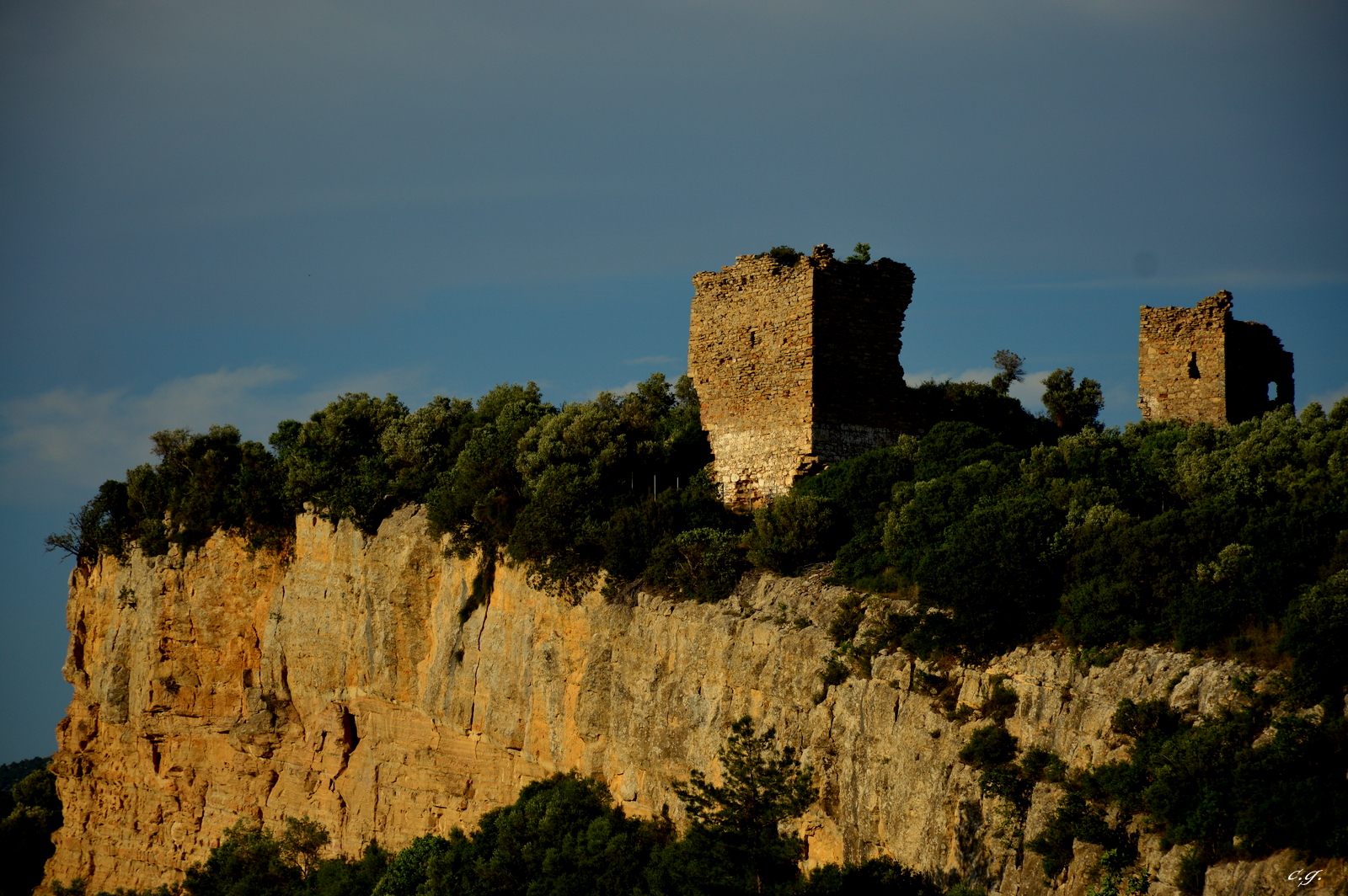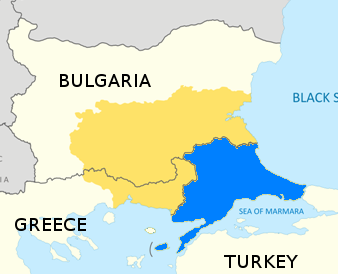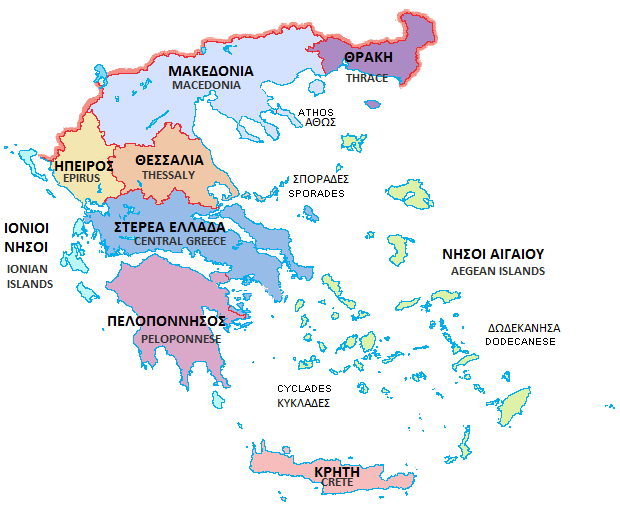|
Thraki
Western Thrace or West Thrace ( el, öŽģŽä╬╣╬║╬«╬śŽü╬¼╬║╬Ę, '' ytik├ŁThr├Īki'' ; tr, Bat─▒ Trakya; bg, ąŚą░ą┐ą░ą┤ąĮą░/ąæąĄą╗ąŠą╝ąŠčĆčüą║ą░ ąóčĆą░ą║ąĖčÅ, ''Zapadna/Belomorska Trakiya''), also known as Greek Thrace, is a geographic and historical region of Greece, between the Nestos and Evros rivers in the northeast of the country; East Thrace, which lies east of the river Evros, forms the European part of Turkey, and the area to the north, in Bulgaria, is known as Northern Thrace. Inhabited since paleolithic times, it has been under the political, cultural and linguistic influence of the Greek world since the classical era; Greeks from the Aegean islands extensively colonized the region (especially the coastal part) and built prosperous cities such as Abdera (home of Democritus, the 5th-century B.C. philosopher who developed an atomic particle theory, and of Protagoras, a leading sophist) and Sale (near present-day Alexandroupolis). Under the Byzantine Empire, Western ... [...More Info...] [...Related Items...] OR: [Wikipedia] [Google] [Baidu] |
Alexandroupolis
Alexandroupolis ( el, ╬æ╬╗╬Ą╬Š╬▒╬Į╬┤Žü╬┐ŽŹŽĆ╬┐╬╗╬Ę, ), Alexandroupoli, or Alexandrople is a city in Greece and the capital of the Evros regional unit. It is the largest city in Western Thrace and the region of Eastern Macedonia and Thrace. It has 71,601 inhabitants and is an important port and commercial center of northeastern Greece. The city was first settled by the Ottoman Empire in the 19th century and grew into a fishing village, Dedea─¤a├¦. In 1873, it became a ''kaza'' and one year later, it was promoted to a ''sanjak''. The city developed into a regional trading center. Later, it became a part of Adrianople Vilayet. During the Russo-Turkish War (1877ŌĆō1878), it was briefly captured by the Russians. Ottoman rule ended with the First Balkan War, when the city was captured by Bulgaria in 1912. In the Second Balkan War, Greece took the control of the city. With the Treaty of Bucharest (10 August 1913), the city returned back to Bulgaria. With the defeat of Bulgaria in Wor ... [...More Info...] [...Related Items...] OR: [Wikipedia] [Google] [Baidu] |
Komotini
Komotini ( el, ╬Ü╬┐╬╝╬┐Žä╬Ę╬Į╬«, tr, G├╝m├╝lcine, bg, ąÜąŠą╝ąŠčéąĖąĮąĖ) is a city in the region of East Macedonia and Thrace, northeastern Greece. It is the capital of the Rhodope. It was the administrative centre of the Rhodope-Evros super-prefecture until its abolition in 2010, by the Kallikratis Plan. The city is home to the Democritus University of Thrace, founded in 1973. Komotini is home to a sizeable Turkish speaking Muslim minority. They were excluded from the 1923 population exchange. Komotini has population of65.107 /Https://elstat-outsourcers.statistics.gr/Census2022%20GR.pdf citizens Built at the northern part of the plain bearing the same name, Komotini is one of the main administrative, financial and cultural centers of northeastern Greece and also a major agricultural and breeding center of the area. It is also a significant transport interchange, located 795 km NE of Athens and 281 km NE of Thessaloniki. The presence of the Democritus University of Thr ... [...More Info...] [...Related Items...] OR: [Wikipedia] [Google] [Baidu] |
Eastern Macedonia And Thrace
Eastern Macedonia and Thrace ( el, ╬æ╬Į╬▒Žä╬┐╬╗╬╣╬║╬« ╬£╬▒╬║╬Ą╬┤╬┐╬Į╬»╬▒ ╬║╬▒╬╣ ╬śŽü╬¼╬║╬Ę, translit=Anatolik├Ł Makedon├Ła ke Thr├Īki, ) is one of the thirteen administrative regions of Greece. It consists of the northeastern parts of the country, comprising the eastern part of the region of Macedonia along with the region of Western Thrace, and the islands of Thasos and Samothrace. Administration Administrative history The region of Eastern Macedonia and Thrace was established in the 1987 administrative reform as the Eastern Macedonia and Thrace Region ( el, ╬Ā╬ĄŽü╬╣Žå╬ŁŽü╬Ą╬╣╬▒ ╬æ╬Į╬▒Žä╬┐╬╗╬╣╬║╬«Žé ╬£╬▒╬║╬Ą╬┤╬┐╬Į╬»╬▒Žé ╬║╬▒╬╣ ╬śŽü╬¼╬║╬ĘŽé, translit=Perif├®ria Anatolik├Łs Makedhon├Łas ke Thr├Īkis. With the 2010 Kallikratis plan, its powers and authority were redefined and extended, with the preexisting region in many respects inheriting status and weight of the five now abolished prefectures, Drama, Evros, Kavala, Rhodope and Xanthi. In this special case, the region of Eas ... [...More Info...] [...Related Items...] OR: [Wikipedia] [Google] [Baidu] |
East Thrace
East Thrace or Eastern Thrace ( tr, Do─¤u Trakya or simply ''Trakya''; el, ╬æ╬Į╬▒Žä╬┐╬╗╬╣╬║╬« ╬śŽü╬¼╬║╬Ę, ''Anatoliki Thraki''; bg, ąśąĘč鹊čćąĮą░ ąóčĆą░ą║ąĖčÅ, ''Iztochna Trakiya''), also known as Turkish Thrace or European Turkey, is the part of Turkey that is geographically a part of Southeast Europe. It accounts for 3.4% of Turkey's land area but comprises 15% of its total population. The largest city of the region is Istanbul, which straddles the Bosporus between Europe and Asia. East Thrace is of historic importance as it is next to a major sea trade corridor and constitutes what remains of the once-vast Ottoman Empire, Ottoman region of Rumelia. It is currently also of specific geostrategy, geostrategic importance because the sea corridor, which includes two narrow straits, provides access to the Mediterranean Sea from the Black Sea for the navies of five countries: Russia, Ukraine, Romania, Bulgaria, and Georgia (country), Georgia. The region also serves as a future con ... [...More Info...] [...Related Items...] OR: [Wikipedia] [Google] [Baidu] |
Rhodope (regional Unit)
Rhodope ( el, ╬Ī╬┐╬┤ŽīŽĆ╬Ę, ''Rod├│pi'' ) is one of the regional units of Greece. It is part of the region of East Macedonia and Thrace. Its name is derived from the Rhodope Mountains, which cover the northern part of its territory. Together with the regional units Evros and Xanthi, it forms the geographical region of Western Thrace. The capital of the prefecture is the city of Komotini. The second largest town is Sapes. Most of the Muslims of Thrace, the only officially recognized minority in Greece, are settled in this area, where they form around half of the regional unit's population. Geography Rhodope borders on the regional unit Xanthi to the west and Evros to the east, and on Bulgaria's Kardzhali Province to the north. The Aegean Sea lies to the south. The eastern Rhodope Mountains cover the northern part of the regional unit. Apart from the mountainous areas, the territory consists mainly of farmland, forests and grasslands. The southern and the central part have a m ... [...More Info...] [...Related Items...] OR: [Wikipedia] [Google] [Baidu] |
Traditional Geographic Divisions Of Greece
The traditional geographic regions of Greece ( el, ╬│╬ĄŽē╬│Žü╬▒Žå╬╣╬║╬¼ ╬┤╬╣╬▒╬╝╬ĄŽü╬»Žā╬╝╬▒Žä╬▒, , geographic departments) are the country's main historical-geographic regions, and were also official administrative regional subdivisions of Greece until the 1987 administrative reform.╬Ā.╬ö. 51/87 "╬Ü╬▒╬Ė╬┐Žü╬╣Žā╬╝ŽīŽé ŽäŽē╬Į ╬Ā╬ĄŽü╬╣Žå╬ĄŽü╬Ą╬╣ŽÄ╬Į Žä╬ĘŽé ╬¦ŽÄŽü╬▒Žé ╬│╬╣╬▒ Žä╬┐ ŽāŽć╬Ą╬┤╬╣╬▒Žā╬╝Žī ╬║.╬╗.ŽĆ. Žä╬ĘŽé ╬Ā╬ĄŽü╬╣Žå╬ĄŽü╬Ą╬╣╬▒╬║╬«Žé ╬æ╬Į╬¼ŽĆŽäŽģ╬Š╬ĘŽé" (''Determination of the Regions of the Country for the planning etc. of regional development, ╬”╬Ģ╬Ü A 26/06.03.1987 Despite their replacement as first-level administrative units by only partly identical administrative regions ( el, ŽĆ╬ĄŽü╬╣Žå╬ŁŽü╬Ą╬╣╬ĄŽé), the nine traditional geographic regionsŌĆösix on the mainland and three island groupsŌĆöare still widely referred to in unofficial contexts and in daily discourse. , the official administrative divisions of Greece consist of 13 regions ( el, ŽĆ╬ĄŽü╬╣Žå╬ŁŽü╬Ą╬╣╬ĄŽé)ŌĆöni ... [...More Info...] [...Related Items...] OR: [Wikipedia] [Google] [Baidu] |
Turkey
Turkey ( tr, T├╝rkiye ), officially the Republic of T├╝rkiye ( tr, T├╝rkiye Cumhuriyeti, links=no ), is a list of transcontinental countries, transcontinental country located mainly on the Anatolia, Anatolian Peninsula in Western Asia, with a East Thrace, small portion on the Balkans, Balkan Peninsula in Southeast Europe. It shares borders with the Black Sea to the north; Georgia (country), Georgia to the northeast; Armenia, Azerbaijan, and Iran to the east; Iraq to the southeast; Syria and the Mediterranean Sea to the south; the Aegean Sea to the west; and Greece and Bulgaria to the northwest. Cyprus is located off the south coast. Turkish people, Turks form the vast majority of the nation's population and Kurds are the largest minority. Ankara is Turkey's capital, while Istanbul is its list of largest cities and towns in Turkey, largest city and financial centre. One of the world's earliest permanently Settler, settled regions, present-day Turkey was home to important Neol ... [...More Info...] [...Related Items...] OR: [Wikipedia] [Google] [Baidu] |
Bulgaria
Bulgaria (; bg, ąæčŖą╗ą│ą░čĆąĖčÅ, BŪÄlgariya), officially the Republic of Bulgaria,, ) is a country in Southeast Europe. It is situated on the eastern flank of the Balkans, and is bordered by Romania to the north, Serbia and North Macedonia to the west, Greece and Turkey to the south, and the Black Sea to the east. Bulgaria covers a territory of , and is the sixteenth-largest country in Europe. Sofia is the nation's capital and largest city; other major cities are Plovdiv, Varna and Burgas. One of the earliest societies in the lands of modern-day Bulgaria was the Neolithic Karanovo culture, which dates back to 6,500 BC. In the 6th to 3rd century BC the region was a battleground for ancient Thracians, Persians, Celts and Macedonians; stability came when the Roman Empire conquered the region in AD 45. After the Roman state splintered, tribal invasions in the region resumed. Around the 6th century, these territories were settled by the early Slavs. The Bulgars, led by Asp ... [...More Info...] [...Related Items...] OR: [Wikipedia] [Google] [Baidu] |
Northern Thrace
Northern Thrace or North Thrace ( bg, ąĪąĄą▓ąĄčĆąĮą░ ąóčĆą░ą║ąĖčÅ, as opposed to Western Thrace and East Thrace to the south; tr, Kuzey Trakya; el, ╬ÆŽīŽü╬Ą╬╣╬▒ ╬śŽü╬¼╬║╬Ę), also called Bulgarian Thrace, constitutes the northern and largest part of the historical region of Thrace. It is located in Southern Bulgaria and includes the territory south of the Balkan Mountains and east of the Mesta River, bordering Greece and Turkey in the south and the Black Sea in the east. It encompasses Sredna Gora, the Upper Thracian Plain and 90% of the Rhodopes. The climate ranges from continental to transitional continental and mountainous. The highest temperature recorded in Bulgaria occurred here: it was at Sadovo in 1916. The main rivers of the region are the Maritsa and its tributaries. Notable cities include Plovdiv, Burgas, Stara Zagora, Sliven, Haskovo, Yambol, Pazardzhik, Asenovgrad, Kardzhali, Dimitrovgrad, Kazanlak and Smolyan. Northern Thrace has an area of 42,073 km2. The Ottoman ... [...More Info...] [...Related Items...] OR: [Wikipedia] [Google] [Baidu] |
Paleolithic
The Paleolithic or Palaeolithic (), also called the Old Stone Age (from Greek: ŽĆ╬▒╬╗╬▒╬╣ŽīŽé ''palaios'', "old" and ╬╗╬»╬Ė╬┐Žé ''lithos'', "stone"), is a period in human prehistory that is distinguished by the original development of stone tools, and which represents almost the entire period of human prehistoric technology. It extends from the earliest known use of stone tools by hominins, 3.3 million years ago, to the end of the Pleistocene, 11,650 cal BP. The Paleolithic Age in Europe preceded the Mesolithic Age, although the date of the transition varies geographically by several thousand years. During the Paleolithic Age, hominins grouped together in small societies such as bands and subsisted by gathering plants, fishing, and hunting or scavenging wild animals. The Paleolithic Age is characterized by the use of knapped stone tools, although at the time humans also used wood and bone tools. Other organic commodities were adapted for use as tools, includ ... [...More Info...] [...Related Items...] OR: [Wikipedia] [Google] [Baidu] |
Culture
Culture () is an umbrella term which encompasses the social behavior, institutions, and norms found in human societies, as well as the knowledge, beliefs, arts, laws, customs, capabilities, and habits of the individuals in these groups.Tylor, Edward. (1871). Primitive Culture. Vol 1. New York: J.P. Putnam's Son Culture is often originated from or attributed to a specific region or location. Humans acquire culture through the learning processes of enculturation and socialization, which is shown by the diversity of cultures across societies. A cultural norm codifies acceptable conduct in society; it serves as a guideline for behavior, dress, language, and demeanor in a situation, which serves as a template for expectations in a social group. Accepting only a monoculture in a social group can bear risks, just as a single species can wither in the face of environmental change, for lack of functional responses to the change. Thus in military culture, valor is counted a typica ... [...More Info...] [...Related Items...] OR: [Wikipedia] [Google] [Baidu] |
Politics
Politics (from , ) is the set of activities that are associated with making decisions in groups, or other forms of power relations among individuals, such as the distribution of resources or status. The branch of social science that studies politics and government is referred to as political science. It may be used positively in the context of a "political solution" which is compromising and nonviolent, or descriptively as "the art or science of government", but also often carries a negative connotation.. The concept has been defined in various ways, and different approaches have fundamentally differing views on whether it should be used extensively or limitedly, empirically or normatively, and on whether conflict or co-operation is more essential to it. A variety of methods are deployed in politics, which include promoting one's own political views among people, negotiation with other political subjects, making laws, and exercising internal and external force, including wa ... [...More Info...] [...Related Items...] OR: [Wikipedia] [Google] [Baidu] |







